“The capabilities of sheet metal fabrication lie in its diversity of techniques; it combines cutting, bending, welding, and other techniques to craft the final part.”
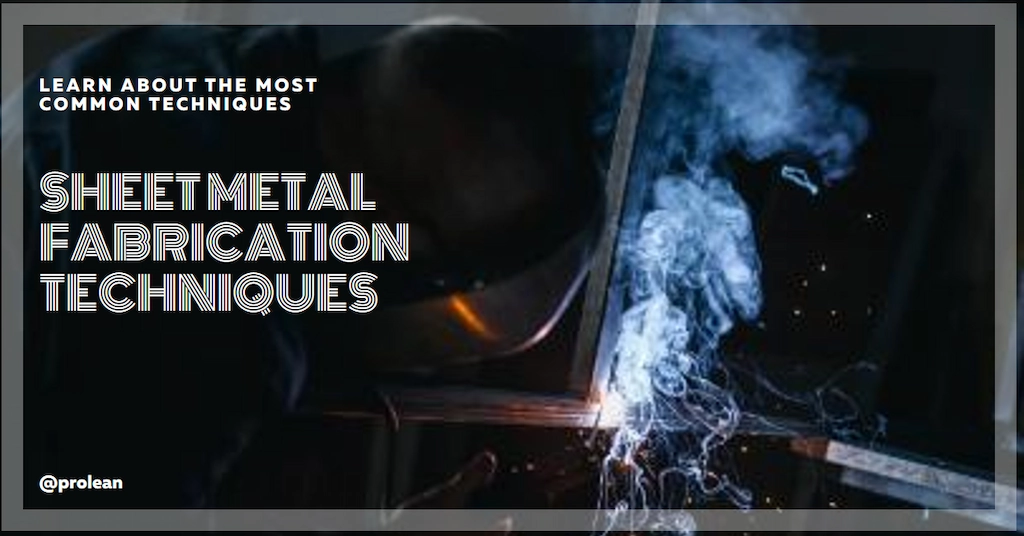
Fabrication is not a single-shot process. It is a combination of different tools, processes, and techniques. So, manipulating a raw sheet into final shapes involves different sheet metal fabrication techniques, from cutting to joining.
Each fabrication technique serves a specific purpose in sheet metal parts manufacturing. For instance, the sheet metal welding technique joins the individual parts, and plasma cutting cuts the sheets. Let’s discuss the eight common sheet metal fabrication techniques in detail.
The Basics of Sheet Metal Fabrication
First, what is sheet metal fabrication? It is a comprehensive process of manipulating sheet metal to create specific shapes, geometry, or structures. This manufacturing approach is crucial in various industries, including automotive, aerospace, and electronics.
Sheet metal fabrication services often involve several steps, starting with the design phase, where precise measurements and specifications are determined. Following this, the fabrication process includes cutting the metal sheet into the desired shape using techniques like CNC laser cutting, punching, or metal shearing. The further steps involve bending and forming the metal into the required form, often using press brakes and other specialized machinery. Finally, the pieces are assembled and joined through welding, riveting, or adhesives.
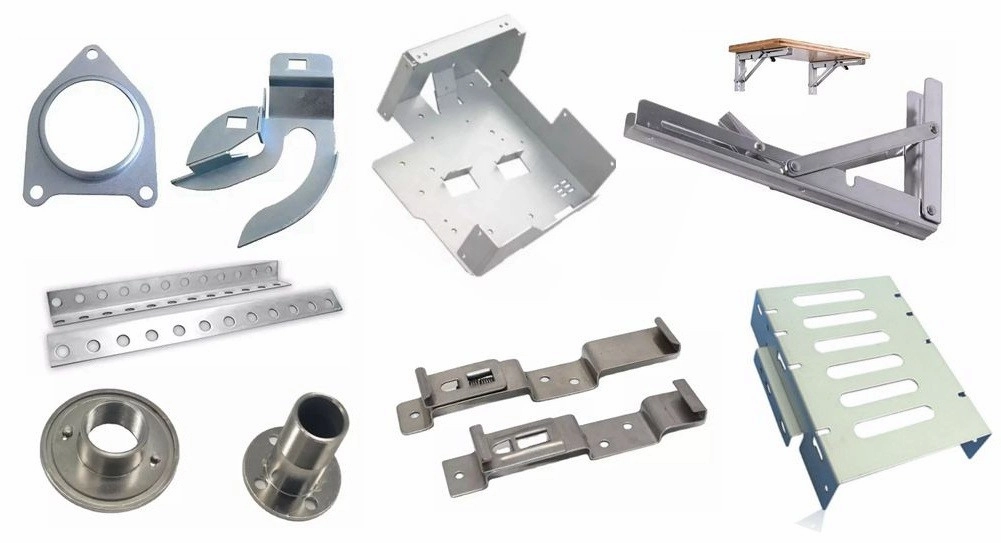
Sheet metal parts
Furthermore, the metal fabrication process is compatible with many materials, like aluminum, stainless steel, copper, brass, etc. Meanwhile, aluminum and stainless steel sheet metal fabrication is particularly significant due to the material’s favorable properties, like corrosion resistance, strength, and aesthetic appeal.
Now, let’s go through the techniques;
1. Sheet Metal Cutting
Cutting is often the first technique in the metal fabrication process. It involves removing sheet metal portions to achieve specific dimensions and shapes. Subsequently, The cutting also lays the groundwork for subsequent fabrication steps like bending, welding, or assembling.
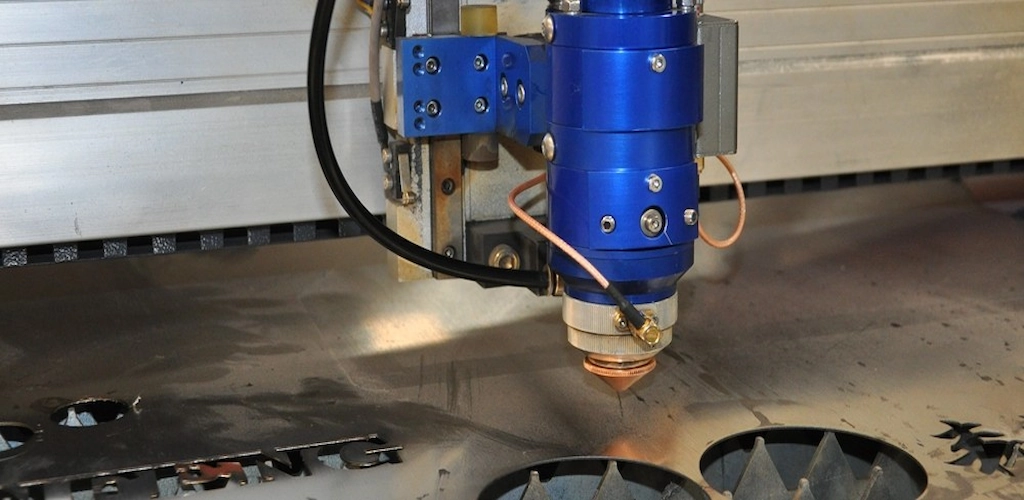
Sheet metal cutting process
An effective cutting ensures that the metal parts fit together accurately in the final assembly, maintaining the integrity and functionality of the end product. You can use different sheet metal cutting methods in manufacturing to achieve the desired cut, each suitable for different sheet metal types, thicknesses, and precision requirements.
Table: Different Sheet Metal Cutting Methods
| Cutting Method | Working | Precision | Compatible Metals | Applications | Thickness Capability |
| Shear Cutting | Uses a blade to apply shear force and slice the metal sheet. | Moderate | Most metals including steel, aluminum, and brass. | Suitable for straight-line cuts and trimming. | Typically up to 0.25 inches. |
| CNC Laser Cutting | A high-powered laser beam focused on the metal to melt, burn, or vaporize. | High | Steel, stainless steel, aluminum, copper, brass, and more. | Intricate and complex shapes, and detailed designs. | 1 inch, but higher for soft metals. |
| Waterjet Cutting | A high-pressure stream of water mixed with abrasives, cut through a sheet. | High | All metals including titanium alloys and non-metals | Diverse applications including parts sensitive to heat. | Up to 6 inches |
| Plasma Cutting | A plasma torch ionizes the gas and creates a hot plasma stream that melts the metal sheet. | Moderate | Electrically conductive metals. | Thick sheets, large components, rapid prototyping. | Up to 2 inches |
Related: Capabilities of Non-shear Cutting Techniques
Try Prolean Now!
2. Sheet Metal Bending
Bending involves applying force to a metal sheet to deform it along a straight line, changing its shape without altering its volume or thickness. This process requires skill and precision, as the metal must be bent accurately to the specified angles and dimensions.

Sheet metal bending technique
The following are the critical Sheet Metal Bending Considerations:
Bend Radius
- Critical for avoiding cracking or deformation.
- Often 0-1 times the thickness of the sheet for aluminum
- 1-2 times the thickness of steel
Angle of Bend
- Determines the sharpness and extent of the bend.
- Common angles include 90°, 120°, and 180°.
- Precision up to ±0.5° is often achievable.
Types of Bend
- V-Bend: Most common, forms a V-shape in the metal.
- U-Bend: Creates a U-shape, often used in channels and brackets.
- Offset Bend: Produces a Z-shape, used for parts requiring complex geometries.
- Hem Bend: Involves folding the edge back onto itself for a smooth, safe edge.
Furthermore, sheet metal bending is achieved through various methods and tools, each suitable for different types of metals and thicknesses.
Metal Bending Equipment and Tools
Diverse equipment and tools are utilized in sheet metal bending, each serving a specific purpose. Firstly, press brakes are commonly used for precise bending, employing dies and punches to create accurate bends. Secondly, molding machines clamp and lift the metal for intended bends. Thirdly, roll benders are for cylindrical shapes that gradually shape the metal using rollers are used.
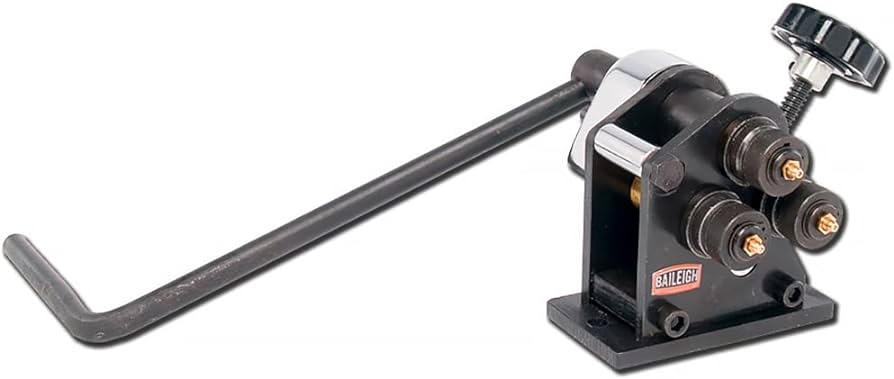
Roll bender equipment
Moreover, the choice of tool or machine depends on several factors, including the metal’s thickness, the complexity of the bend, and the required production volume.
3. Sheet Metal Punching
Sheet Metal Punching refers to removing a material portion from a metal sheet to create holes or cutouts of desired shapes & sizes. It involves a punch press machine, where a punch tool is forcefully driven into the metal sheet, shearing through it, and creating the desired hole or shape.
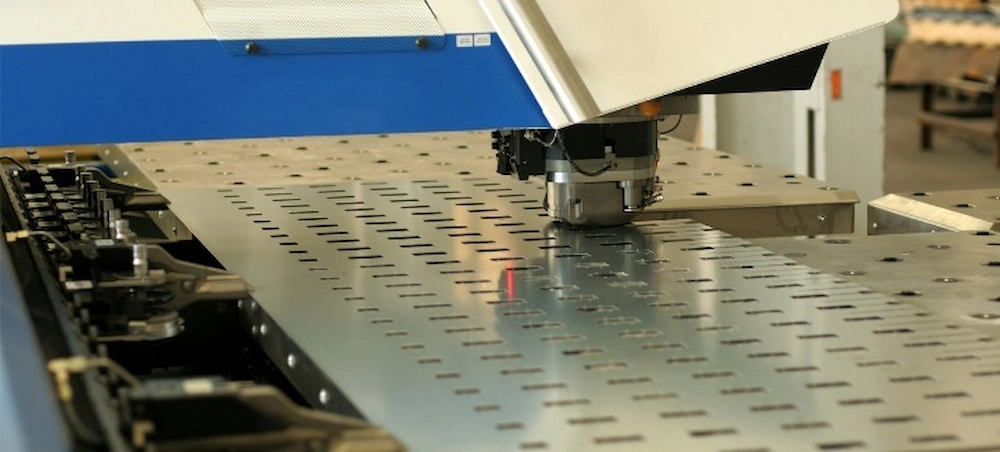
Sheet metal punching process
Subsequently, several key considerations should be taken into account when opting for sheet metal punching:
Table: Sheet Metal Punching Consideration
| Consideration | Description |
| Material Type | Suitability of the punch tool for different materials. |
| Thickness | Impact of material thickness on the punching process. |
| Tolerance | Requires precision and how it affects tool choice. |
| Tool Wear | Maintenance is needed to ensure consistent quality. |
| Edge Quality | The impact on the product’s appearance and functionality. |
When to use Sheet Metal Punching?
The punching technique excels in mass production, enabling the efficient creation of large volumes of parts with consistent holes and shapes. It’s indispensable in manufacturing components demanding exact hole dimensions and placements, exemplified by precision-cut automotive parts. Additionally, it’s adept at producing complex patterns and cutouts that found are challenging with other methods. For example, sheet metal punching in the manufacturing of electrical enclosures allows complexity and customization.
Related: Achieving Precision and Accuracy in Sheet Metal Punching: Essential Tips for Maximizing Productivity
4. Sheet Metal Stamping
Stamping is a process that involves pressing a metal sheet into a specific shape or design using a die and a press machine. This technique is essential in transforming flat metal sheets into various intricate forms. There are different approaches to achieving stamping parts based on needs and design. For example, progressive stamping involves multiple stages for complex designs, often used in the automotive and electronics industries.
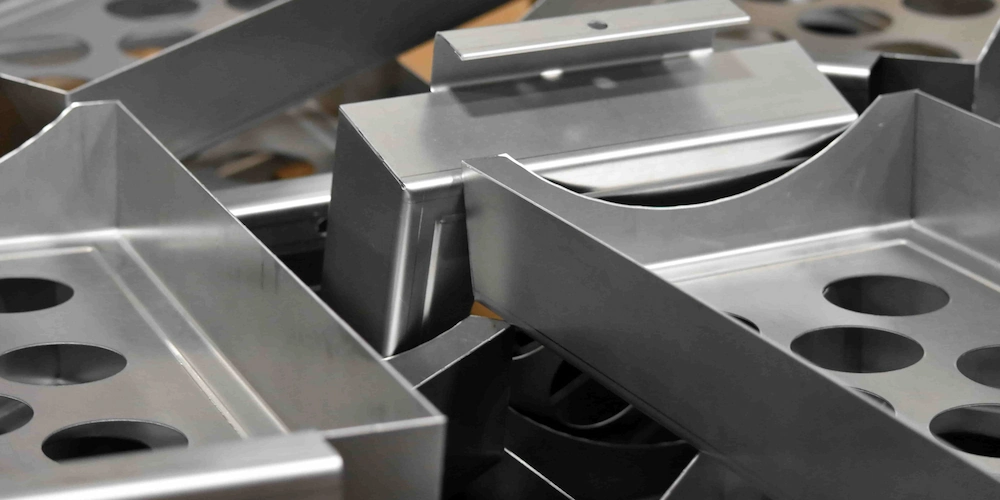
Sheet metal stamping parts
The following are the critical considerations for Sheet Metal Stamping:
- Die Design: An accurate die ensures consistent stamped parts. It involves detailed engineering to match the desired final shape.
- Material Thickness: The thickness varies according to the type of sheet metal. Meanwhile, thickness selection affects the stamping process’s feasibility and quality.
- Stamping Force: Determine the optimal force based on the metal’s properties and the complexity of the design. An optimal stamping force ensures clean, precise shapes without damaging the metal.
Metal Stamping Equipment and Tools
First, mechanical presses are widely used for high-speed stamping, suitable for large-volume production. Secondly, hydraulic presses offer precise control for thicker and tougher sheets. Thirdly, transfer presses are ideal for complex or multi-stage stamping processes. Moreover, the selection of stamping equipment depends on various factors, including the metal type, part complexity, desired precision, and production volume.
Related: The Basics of Stamping: Understanding the Process and Its Applications
Try Prolean Now!
5. Sheet Metal Welding
Welding joins two or more pieces of metal together by applying heat, pressure, or both. This technique is fundamental in the metal fabrication industry. It creates complex structures and components from simpler metal pieces. Consequently, the welding process makes strong bonds and maintains the integrity and continuity of the metal. As a result, it is crucial for the durability and functionality of the final product.
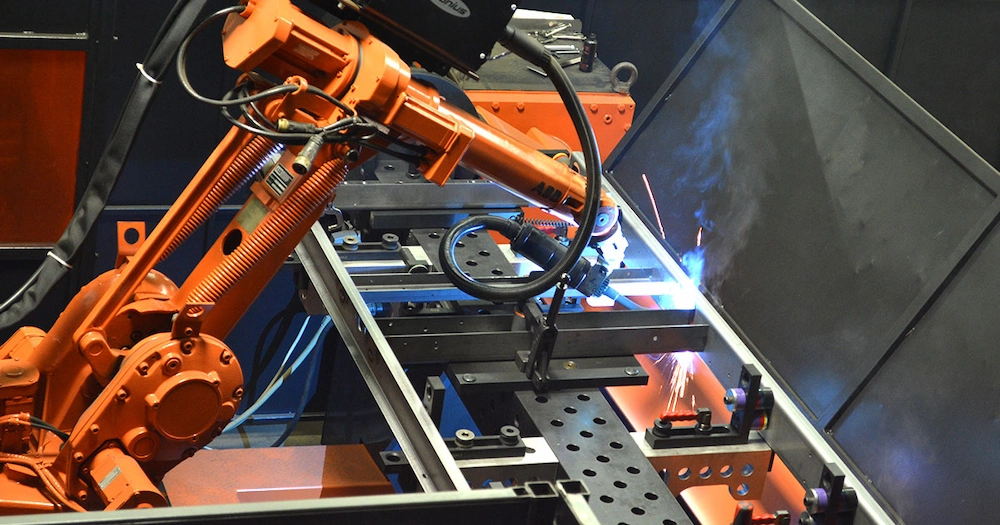
Robotic sheet metal welding
Additionally, welding is versatile, allowing for the integration of different types and thicknesses of metals, which is invaluable in custom fabrication projects. However, the skill and precision required in sheet metal welding play a significant role in determining the quality and appearance of the finished product.
Below is a table describing five common types of welding used in sheet metal fabrication:
Table: Sheet Metal Welding Types
| Welding Types | Description | Common Uses | Advantages | Limitations |
| MIG Welding (Metal Inert Gas) | Uses a continuously fed wire electrode and an inert gas to shield the weld. | Automotive, robotics, construction | High speed, good for long welds, easy to learn | Less effective on very thick materials |
| TIG Welding (Tungsten Inert Gas) | Utilizes a non-consumable tungsten electrode and inert gas. | Aerospace, artistic sculptures | High precision, clean welds, versatile | Slower process requires high skill level |
| Stick Welding (Shielded Metal Arc) | Employs an electrode stick that melts to create the weld. | Field repairs, heavy equipment | Versatile, no gas required, effective outdoors | Rougher welds, less precision |
| Laser Welding | Uses a laser beam as a concentrated heat source. | Electronics, medical devices | High precision, minimal distortion, fast | Requires specialized equipment, |
Related: A Comprehensive Guide to Welding Processes: Enhancing Your Manufacturing Capabilities
6. Machining in Sheet Metal Fabrication
Machining is a critical process in sheet metal fabrication that involves the removal of material from a workpiece to achieve the desired shape and dimensions. Unlike forming processes, machining provides high precision and is essential for creating intricate details and features on metal components.

Sheet metal CNC machining
Let’s look at an example of the custom electronic aluminum enclosure to understand the working machining and fabrication techniques together to create a part;
Initially, the aluminum sheet is cut to size using laser cutting, a sheet metal fabrication technique, ensuring precision and clean edges. The cut pieces are then bent into the desired shape using a press brake, forming the basic structure of the enclosure. Next, CNC machining is applied for intricate details and precise cutouts on the enclosure for ports, ventilation, and interfaces. As a result, this combination fabricates a highly accurate and aesthetically pleasing aluminum enclosure.
Machining Methods
Machining in sheet metal fabrication encompasses various techniques, each suited to specific applications and materials. Here are some methods;
- CNC Milling: It uses computer-controlled rotating cutting tools to remove material. Ideal for complex shapes and high precision.
- CNC Turning: A machining process where the metal piece rotates while a cutting tool moves in linear motion. Useful for cylindrical parts.
- Electrical Discharge Machining(EDM): Uses electrical sparks to mold metal into a specific shape. Excellent for intricate or hard materials.
These techniques bring unique capabilities to the table, allowing for a wide range of customization and complexity in sheet metal projects.
7. Sheet Metal Riveting
It is another reliable method used in metal fabrication to join pieces of sheet metal or other materials without melting them. Riveting in sheet metal involves inserting a rivet, a short metal pin, or a bolt through aligned holes in the pieces. Once in place, the protruding part of the rivet is deformed to create a head, holding the materials firmly together.
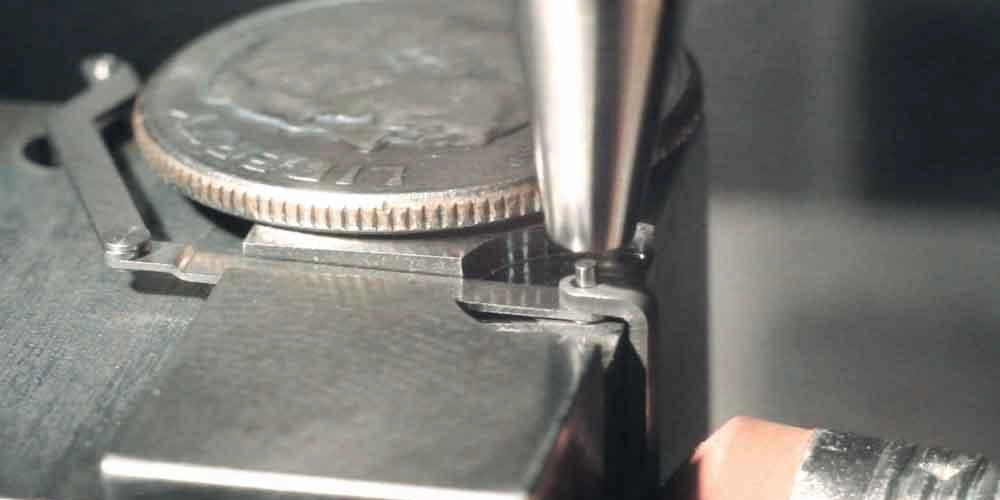
Sheet metal riveting process
You can find several types of rivets and riveting techniques suited to specific applications and material types. Common rivet types include:
- Solid Rivets: Provide the strongest joints, commonly used in high-stress applications, such as aircraft construction.
- Pop Rivets (also known as Blind Rivets): Ideal for situations where access is only available from one side of the materials.
- Blind Rivets: Similar to pop rivets but designed for heavier applications. They can be installed quickly and are beneficial for large-scale manufacturing.
- General Considerations: The choice of rivet type depends on material thickness, accessibility, and required joint strength.
Related: Rivets vs. Welding: The Great Metal Joining Debate
8. Sheet Metal Blanking
Sheet Metal blanking cuts out flat pieces of metal from larger sheets in specific shapes. This technique is crucial in mass-producing parts with uniform dimensions. Therefore, it is popular in automotive, electronics, and appliances. The blanking process uses a punch and die. Sheet metal is placed in the die of a corresponding shape. Then punch-press shear the metal, resulting in a blank—the desired part—and a scrap skeleton.
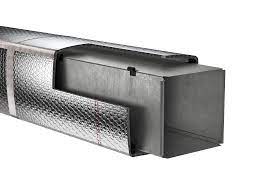
Air-duct made from blanking
Let’s take an example of CNC Blanking in the Manufacturing of Air Ducts:
It allows for tight tolerances and smooth edges of ducts, essential for quality and functionality. One of the advantages of sheet metal blanking is its ability to produce parts with minimal material waste. This efficiency is particularly essential in cost-sensitive production environments.
Here’s a table summarizing the key aspects of sheet metal blanking:
Table: Blanking summary
| Aspect | Description |
| Process | Cutting out flat metal pieces from larger sheets. |
| Technique | Uses a punch and die to shear the metal. |
| Industries | Automotive, electronics, appliances. |
| Advantages | Precision, efficiency, minimal waste, suitable for high volumes. |
| Technological Integration | Often incorporates CNC systems for enhanced precision and speed. |
Related: A Comparative Study of Punching Vs Blanking
Try Prolean Now!
We Fabricate Your Sheet Metal Parts at Prolean
At Prolean, we specialize in utilizing various sheet metal fabrication techniques to bring your designs to life. Our advanced processes range from cutting and bending to welding and surface finishing, ensuring each part meets the highest quality standards. This versatility allows us to handle a broad spectrum of projects, tailoring our approach to meet your specific needs.
Our advanced equipment facility sets us apart in the industry. We have cutting-edge machinery, including CNC bending and forming machines, laser & waterjet cutters, CNC and EDM tools, etc. This advanced equipment streamlines our fabrication process.
Read more:
- China Sheet Metal Fabrication: Affordable & High-Quality Solutions
- Cheap Sheet Metal Fabrication: Choosing an Affordable Option
Summing Up
This manufacturing method is vital in industries like automotive, aerospace, and electronics to shape metal sheets into desired forms. It involves different precise techniques, such as cutting, bending, punching, and stamping. Meanwhile, each technique is critical for the product’s integrity, functionality, and aesthetic. Overall, Sheet metal fabrication techniques exemplify the harmonious blend of technology, material science, and craftsmanship.
FAQs
What is sheet metal fabrication?
Sheet metal fabrication is a process of transforming metal sheets into specific shapes and structures, involving techniques like cutting, bending, and joining, crucial in industries like automotive and aerospace.
What are the sheet metal fabrication techniques?
Key techniques in sheet metal fabrication include cutting (like laser and waterjet cutting), bending (using press brakes), punching, stamping, and machining, each tailored for different design requirements.
How to choose the sheet metal fabrication technique?
Choosing a sheet metal fabrication technique depends on factors such as material type, thickness, desired precision, design complexity, production volume, and cost.
What are the sheet metal joining techniques?
Sheet metal joining techniques encompass welding (like MIG and TIG), riveting, and using adhesives. The choice depends on the material, required strength, and aesthetic considerations.
Resources
- Jocelyn, C. (2022). Metal Fabrication: Basic Techniques. Academia. Retrieved from https://www.academia.edu/10753673/Metal_Fabrication_Basic_TechniquesLamminen Lotta (2014). ProSheet Prototyping and Low-volume Production of Sheet
- Metal Components.Nordic Industrial Fund Center for Innovation and Commercial Development. Retrieved from http://www.diva-portal.org/smash/get/diva2:707051/fulltext01.pdf




Thanks, it explores essential methods for transforming raw sheet metal into finished components, what i exactly needed.